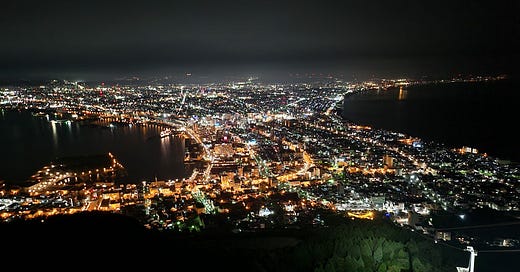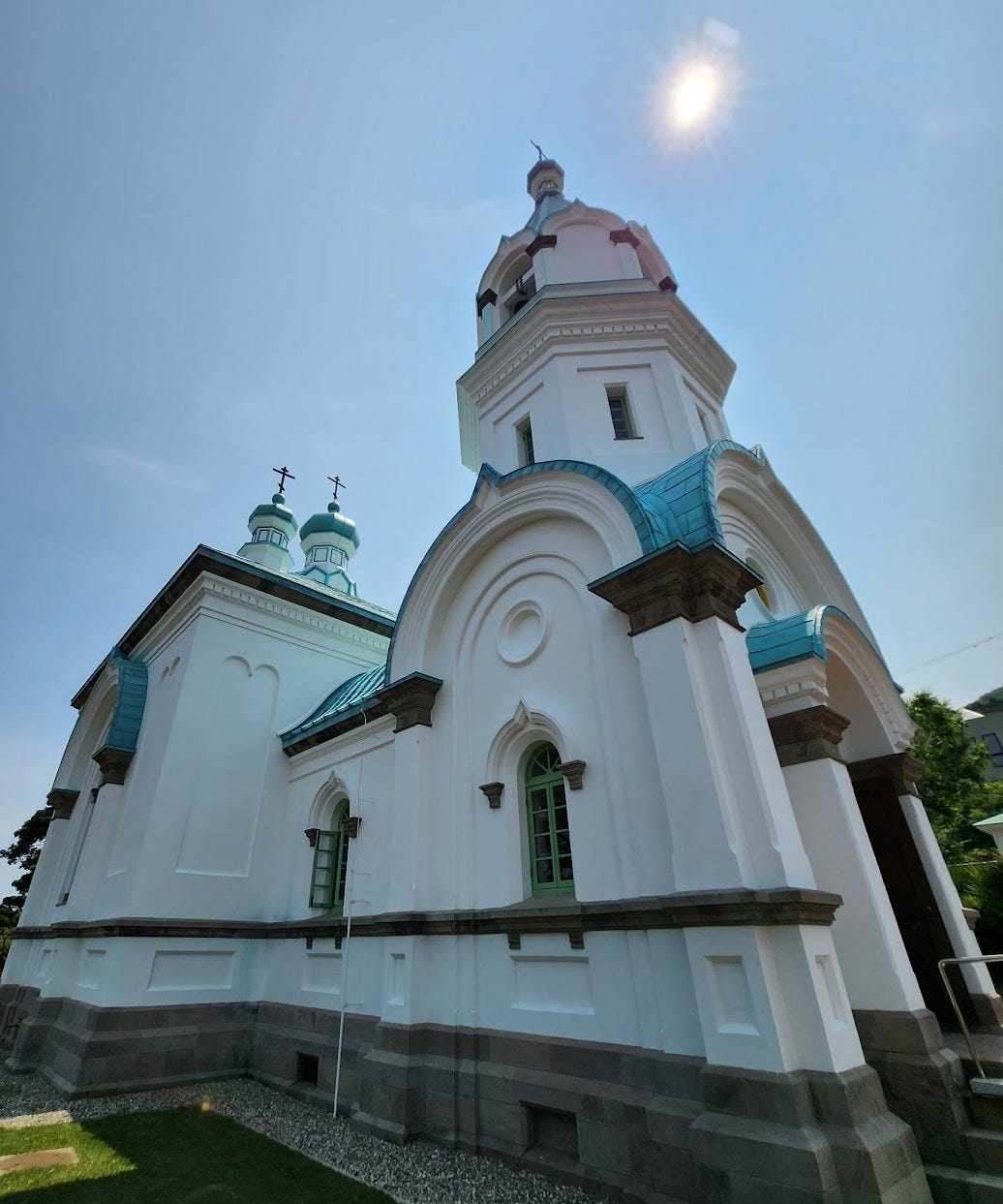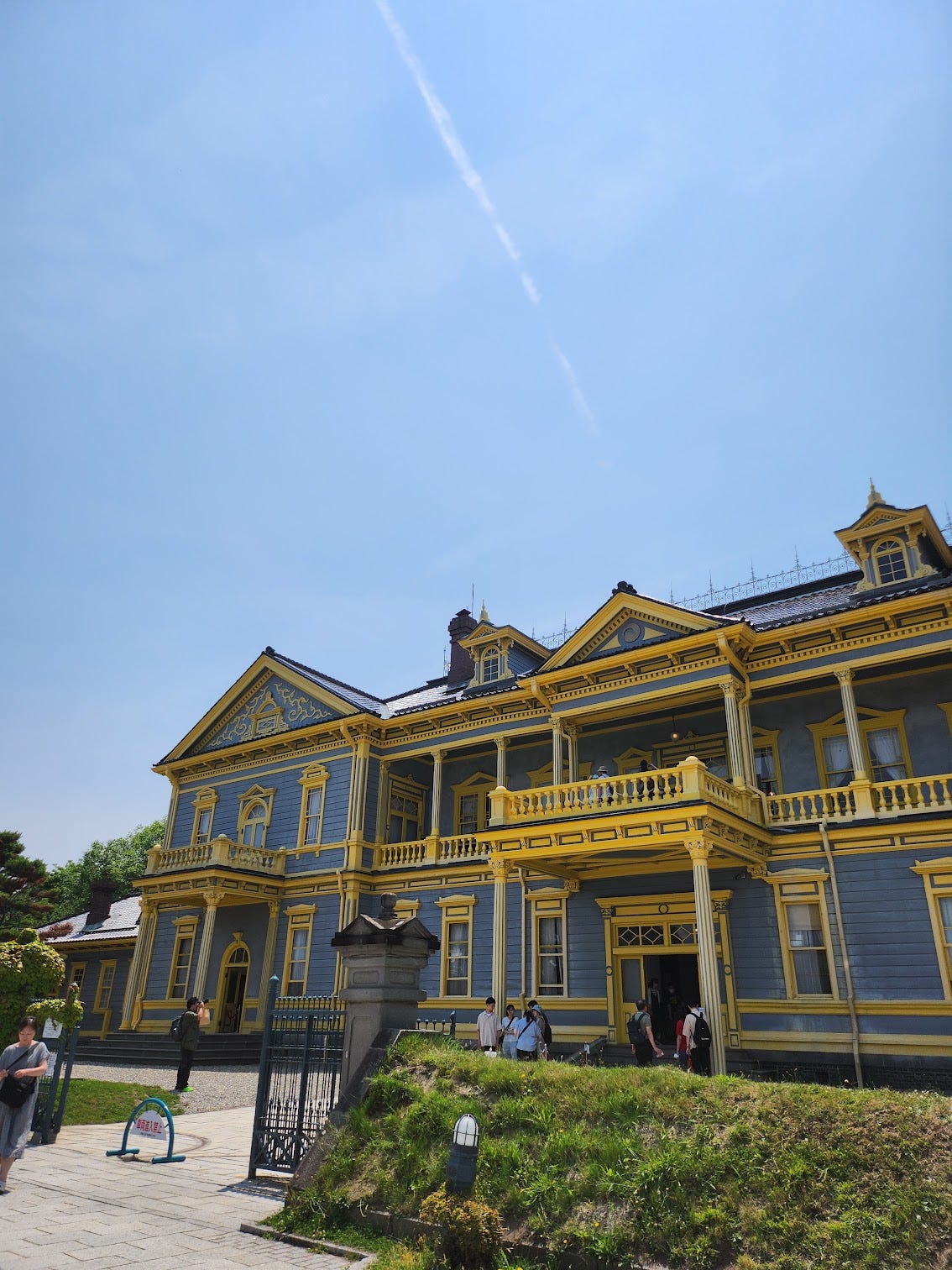Hakodate: Japan's Northern Gem Where East Meets West
Go beyond Sapporo to discover a city with a unique history and quirky charm, unlike anywhere else in Japan.
Hokkaido (北海道), Japan's huge Northern Island, is increasingly becoming more and more well-known to international visitors. Rightfully so. It is a unique island with a lot to see. I have been on three occasions and my most memorable trip was to Hakodate (函館). Compared to the capital city of Sapporo, a popular destination especially in winter, Hakodate is surely not as renowned. It is a smaller city, but I quite enjoyed its unique attractions and its cosmopolitan flair.
When the U.S. Navy Commodore Matthew Perry forcibly awakened Japan from its international isolation in 1854, Hakodate was the first port city opened up to foreign trade. It was surely chosen for how far it is from the main hubs of Japan, like Osaka and Tokyo, to keep the foreigners with their dangerous ideas and products as far from the core of Japanese society as possible. However, because of nearly two centuries of foreign influence and residents, Hakodate has a curious and beautiful mix of Western and Japanese styles. The hillside area with all the old Consulates and other buildings is delightful to explore. This Western influence gave Hakodate a different vibe compared to other Japanese cities. For instance, in Tokyo, looking at the cityscape, you are constantly reminded that you are in Japan. However, standing outside the Russian Orthodox Church and looking down at the cityscape below, I felt I was somewhere else. I enjoyed visiting the Russian Orthodox Church, because I have never seen one elsewhere, and it was a particularly unique place to visit in Japan.
While exploring this hilly and green neighborhood, I also visited a Catholic Church, the Former British Consulate, the Old Public Hall, the Museum of Northern Peoples, and the harbor's Red Brick Warehouses. I learned a lot! And each place showcased how Hakodate has a unique history that differs from every other city in Japan.
Hokkaido is famed for its high-quality dairy and seafood products. Of course, these are delicious in Hakodate. I had an especially memorable cream-filled Melon Pan, but there is a truly unique culinary experience in this city. It is Lucky Pierot (ラッキーピエロ). It is a burger chain restaurant only found in Hakodate. It features a weird clown theme and unique items like a Chinese Chicken Burger. The branch I visited was completely Elvis-themed and had multiple statues of Elvis, as well as other relevant memorabilia. It is another example of Hakodate having a unique blend of the East and the West. The Chinese Chicken Burger was delicious, but the true delight was the quirky ambiance of the store. Each store has a different theme, so be sure to check them out. To be honest, I have found that all of Japan has good seafood and dairy, but only Hakodate has Lucky Pierrot!

Hakodate also has one of Japan's top night views, which, yes, is a thing Japan ranks. It is another example of Japanese places branding themselves in unique ways. Because of this branding, when the sun begins to set, the ropeway becomes a must-do activity! My friends and I had to wait in line to ride the ropeway because of how popular this activity is. It was undoubtedly beautiful. Perhaps because of the cosmopolitan influence, there was a blend of colors of lights in the city below with some streets appearing yellow, others appearing white, and others appearing orange. Another unique characteristic of the Hakodate view is that Hakodate is located on a tombolo. It is a unique land formation that consists of a sandbar connecting a former island to the mainland. The ropeway is located on the former island at the tip of the tombolo, with the city now occupying the former sandbar below. There are very few cities in the world that are built on a tombolo, so it is a unique view.
The city is also home to the Goryokaku (五稜郭), which literally translates to “five-point fort.” As the name implies, it is a former five-pointed military fort. It was designed by a Japanese architect who studied European forts. This fort has prominence in history because it was the site of the last battle of the Boshin War in 1869. The Boshin War was a civil war fought between the Imperial supporters and the ruling Tokugawa Shogunate forces. The Imperial forces ended up winning, which was a major turning point in Japanese history. The same Imperial family is still in power today. For those really interested in Japanese history, the Goryokaku was also the headquarters of the brief five-month Republic of Ezo, which was when the island of Hokkaido was a separatist state. The Goryokaku can be explored on food, but the best way to view it is from the next door tower which was specifically designed to give visitors an aerial view of the uniquely-shaped fort.
All these activities make Hakodate worthwhile for a short visit on perhaps a weekend over a longer cross-Hokkaido trip. If you wish to visit, there are multiple ways to travel to Hakodate. There is an airport, a ferry connecting to Aomori, but unique to all of Hokkaido, there is a Shinkansen, which is a Japanese “bullet train"! Long disconnected from the train lines of the rest of Japan, Hokkaido is slowly being connected to the rest of the country. Currently, only Hakodate is accessible, as the extension to Sapporo will not be finished until at least 2038. I took the Shinkansen from Sendai to Hakodate, which went through the 53 km long Seikan Tunnel which goes as deep as 240 meters (790 feet) below ground and connects the island of Honshu with Hakodate. It is a true engineering marvel. However, the tunnel ride was just a normal experience. It does sound freaky to be that far underground, though. On the way out of Hakodate, I took the ferry from Hakodate to Aomori. The ferry ride was enjoyable and offered stunning views of the cliffs of the Shimokita Peninsula. Then I completed the journey with the Shinkansen from Aomori back to Sendai.
If you're looking for a cosmopolitan Japanese city that blends Eastern and Western culture with unique historical sites and niche food experiences, Hakodate should be on your bucket list. Over a year later, it remains one of my most memorable trips in Japan.










My son is stationed in Aomori & said it is one of his favorite cities in his travels all over Japan. He’s been 3 times.
I only know of one other Russian Orthodox church in Japan. It's the Nikolaido in Tokyo next to Meiji University - https://visit-chiyoda.tokyo/app/en/spot/detail/470
I'll be honest I only know of it because one time I walked past it from Ochanomizu station on my way to a business meeting. The Hakodate one looks nice though.
The only time I've been to Hokkaido we flew to Hakodate airport, but we didn't see the city because we went there to go skiing. I'd like to go see more